Thingiverse
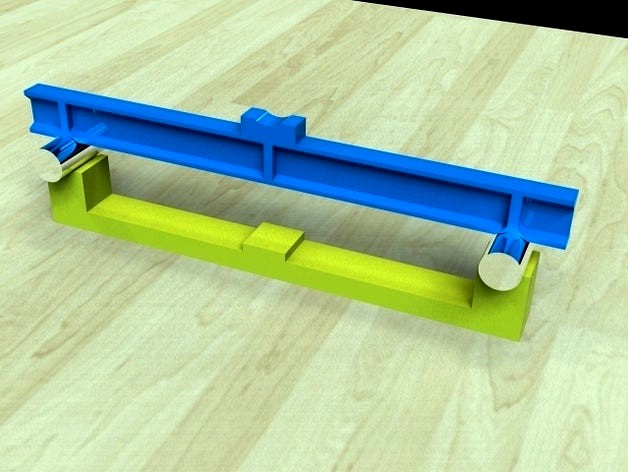
Strength Test Facility for Open Source Appropriate Technology (OSAT) 3D Printing by julianh72
by Thingiverse
Last crawled date: 3 years ago
A Test Bed and sample Test Pieces for strength / stiffness testing of 3D Printed parts
(See attached Word document for a detailed description)
I am recording my development process and experiments in more detail on my blog: http://julianh72.blogspot.com/ I will continue to post relevant files here on Thingiverse, but I will have more space for discussion and debate on my blog. The first entry is here: http://julianh72.blogspot.com/2011/11/testing-strength-of-reprap-printed.html but there will be more discussion on later posts.
EDIT 02 December 2011 - Modified parts (Mk II) uploaded, to make the test assembly more stable.
The strength and stiffness of components manufactured using RepRap and other 3D Printing technologies are affected by a number of independent and inter-dependent parameters, including:
a) the generic stock material used (e.g. PLA, ABS, PE, etc)
b) the actual source and condition of the stock material; e.g. it has been reported that PLA filament will absorb atmospheric humidity over time, and this affects its condition when placed using RepRap-type fabrication; it has also been reported that different coloured batches of otherwise nominally identical filament from the same source can exhibit significantly different fabrication properties, and therefore presumably different mechanical properties
c) the tool-path and build parameters which are used to fabricate the component (e.g. filament diameter, layer thickness, number of layers in the surface “shellâ€, % solid fill vs. % voids used in the core fill, etc)
d) the orientation of the part during printing (filaments parallel or perpendicular to the main load paths, etc)
e) the attributes of the actual printer (print head speed, precision / repeatability of placing the print head, backlash, etc)
When manufacturing components which are intended to have mechanical strength and function, it is necessary to be able to measure the actual strength of materials which can be printed with a particular machine, using a particular set of printing parameters, so that the strength and service life of the component can be predicted, and to assist in the design of new components which will be subjected to loads whose magnitude can be predicted or estimated.
This project came about partly because I am an engineer, and I “need to know†these sorts of things, but was also spurred on by reading an paper on “3-D Printing of Open Source Appropriate Technologies for Self-Directed Sustainable Development†by Pearce, Blair, Laciak, Andrews, Nosrat & Zelenika-Zovko.
[Ref: www.ccsenet.org/jsd “Journal of Sustainable Development†Vol. 3, No. 4; December 2010 http://www.ccsenet.org/journal/index.php/jsd/article/view/6984/6385 ]
(See attached Word document for a detailed description)
I am recording my development process and experiments in more detail on my blog: http://julianh72.blogspot.com/ I will continue to post relevant files here on Thingiverse, but I will have more space for discussion and debate on my blog. The first entry is here: http://julianh72.blogspot.com/2011/11/testing-strength-of-reprap-printed.html but there will be more discussion on later posts.
EDIT 02 December 2011 - Modified parts (Mk II) uploaded, to make the test assembly more stable.
The strength and stiffness of components manufactured using RepRap and other 3D Printing technologies are affected by a number of independent and inter-dependent parameters, including:
a) the generic stock material used (e.g. PLA, ABS, PE, etc)
b) the actual source and condition of the stock material; e.g. it has been reported that PLA filament will absorb atmospheric humidity over time, and this affects its condition when placed using RepRap-type fabrication; it has also been reported that different coloured batches of otherwise nominally identical filament from the same source can exhibit significantly different fabrication properties, and therefore presumably different mechanical properties
c) the tool-path and build parameters which are used to fabricate the component (e.g. filament diameter, layer thickness, number of layers in the surface “shellâ€, % solid fill vs. % voids used in the core fill, etc)
d) the orientation of the part during printing (filaments parallel or perpendicular to the main load paths, etc)
e) the attributes of the actual printer (print head speed, precision / repeatability of placing the print head, backlash, etc)
When manufacturing components which are intended to have mechanical strength and function, it is necessary to be able to measure the actual strength of materials which can be printed with a particular machine, using a particular set of printing parameters, so that the strength and service life of the component can be predicted, and to assist in the design of new components which will be subjected to loads whose magnitude can be predicted or estimated.
This project came about partly because I am an engineer, and I “need to know†these sorts of things, but was also spurred on by reading an paper on “3-D Printing of Open Source Appropriate Technologies for Self-Directed Sustainable Development†by Pearce, Blair, Laciak, Andrews, Nosrat & Zelenika-Zovko.
[Ref: www.ccsenet.org/jsd “Journal of Sustainable Development†Vol. 3, No. 4; December 2010 http://www.ccsenet.org/journal/index.php/jsd/article/view/6984/6385 ]
Similar models
thingiverse
free

Food Scraper by jpearce
...customizable food scraper. print 100% infill with polycarbonate or similar on a reprap for cleaning dishes etc. this component...
thingiverse
free

Viking Shelf Holder by jpearce
...the michigan tech's open sustainability technology research group. for similar see the open-source lab how to build your own...
thingiverse
free

Libre Pickaxe by jpearce
...an tech in open sustainability technology research group. to make open source appropriate technology for sustainable development.
thingiverse
free
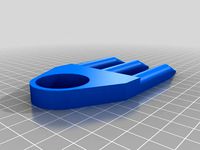
Libre Rake by jpearce
...an tech in open sustainability technology research group. to make open source appropriate technology for sustainable development.
thingiverse
free

Libre simple chisel by jpearce
... tech in open sustainability technology research group. to make open source appropriate technologies for sustainable development.
thingiverse
free

Libre Hoe by jpearce
...an tech in open sustainability technology research group. to make open source appropriate technology for sustainable development.
thingiverse
free

Parametric simple lamp shade by jpearce
...in transparent or translucent filament with a reprap or similar fff 3-d printer. please note all changes to variables...
thingiverse
free

Libre Scorp by jpearce
...an tech in open sustainability technology research group. to make open source appropriate technology for sustainable development.
thingiverse
free

Libre Thin Axe v2 by jpearce
... tech in open sustainability technology research group. to make open source appropriate technologies for sustainable development.
thingiverse
free

PASCO Test Coupon by mfarson
...ge. data on tensile strength of differing filaments printed with a variety of slicing parameters was obtained using this coupon.
Julianh72
thingiverse
free

Visual Illusion by julianh72
...iece should give the illusion that all 4 ramps slope up to the middle platform. viewing from any other angle gives the game away!
thingiverse
free
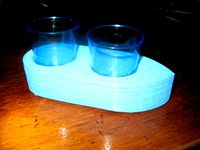
Battleshots by julianh72
...lass small aircraft carrier is there because – well, every navy has to have at least one aircraft carrier (to be the flagship!)
thingiverse
free

Celestron 5SE Dust Cap by julianh72
...el is "shared" publicly in my onspace account - search https://www.onshape.com/ for "celestron 5se dust cap".
thingiverse
free

Just another M3 Thumbwheel! by julianh72
...design for other applications; sorry, no openscad files, but it shouldn’t be too hard to design something similar in openscad!)
thingiverse
free

Solar Finder-Scope by julianh72
...ot;solar finder mk 3".
you may need to ream out the pinhole with a drill bit to get a nice clean sun image on the target.
thingiverse
free

Tripod Spreader for Celestron NexStar 4SE by julianh72
...cked into position.
to fold away the tripod, wind back on the knob, and then the spokes can be folded up between the tripod legs.
thingiverse
free

2 mm Allen Key Extension Handle by julianh72
...eeded a 2.5 mm allen key holder as well, so i have added the file for it, and both designs have the size embossed onto the handle
thingiverse
free

3 mm Spanner for Bed Levelling Screws by julianh72
...uploaded the alibre model file for those with alibre pe who may want to modify the design; otherwise, just download the stl file.
thingiverse
free

Camera-Mount Base for Orion Mini 50 mm Guide Scope by julianh72
...20 thread) salvaged from another camera mount and "welded" it in with a soldering iron to melt the surrounding plastic.
Osat
thingiverse
free

Pin Box Occupational Therapy Toy OSAT
...sat
thingiverse
this is an osat project that fulfills the need of a toy to help patients build their dexterity while in therapy.
thingiverse
free

OSAT Planter with reusable water collection point. by TubaTom
...conjunction with a pot/bottle bottom set inside of this, which then allows water to be drained into a central location for reuse.
thingiverse
free

Twisted Tent Stakes by Azw
...course at michigan technological university. for more information on osat please see...
thingiverse
free

Geared clamping system by dchopp
...by dchopp thingiverse a geared clamping system design for osat more documentation...
thingiverse
free

Spoon Fork Knife Combo by atketter
...fork knife combo by atketter thingiverse this is an osat project for michigan tech's my4777. it is a spoon...
thingiverse
free

Carpenter's Hammer - 16 ounce by cjkmiec
...- 16 ounce by cjkmiec thingiverse hammer made for osat project at michigan tech use a 3/4" x 3.5"...
thingiverse
free

3d Printable Bike Grip by swallen
...is a 3d printable bike handle designed for the osat project for mtu's my4777 class. it features an ergonomic...
thingiverse
free

Parametric Pulley Assembly by lwilder
...this is a fully parametric pulley designed for the osat assignment for ee 4777 @ michigan technological university. please...
thingiverse
free
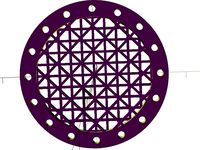
Variable Sifter by AdamPringle
...variable sifter by adampringle thingiverse this osat project is meant to provide utility in sifting for...
Facility
thingiverse
free
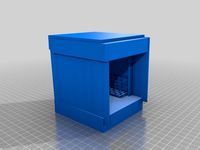
Homeless Facility by mondesirSTEAM
...lity by mondesirsteam
thingiverse
lillie and vivianna made a prototype of a homeless facility for their inventure prize project.
thingiverse
free

TBMM facility by oraltosun
...to stl.
below is the original file link:
https://3dwarehouse.sketchup.com/model.html?id=uece319d4-fd6e-4281-8e9b-64fca96faded
thingiverse
free

T gauge locomotive facility by Carter1970
...omotive facility. it is designed to fit in 3 tracks and i have the roof separate to either fit in leds and to help print quality.
thingiverse
free

MARS MANUFACTURING FACILITY by MarjorieOszman
... reduces the radiation.
the power system is two mini sodium-based nuclear reactors with a estimated life-span of thirty years.
thingiverse
free

HO Scale Container and Truck Loading Facility by kabrumble
...ity uses actual ho rails and wheels and moves smoothly. it has lots of variations.
tips are not necessary...but they are fun.
kim
thingiverse
free

HO Scale Fuel Distribution Facility by kabrumble
...ho scale fuel distribution facility by kabrumble
thingiverse
this is my version of a fuel distribution center.
thingiverse
free

Pandemic Research Facility Upgrade
...ease pieces: https://www.thingiverse.com/thing:4140664
both of these together really make the game a more fun visual experience.
thingiverse
free
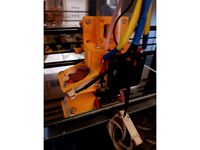
support ventilateur facile a enlever by bender57
... assez de devoir deviser les supports de ventilateurs pour regler ma hauteur de de buse, avec ce remix c'est bien plus simple
thingiverse
free

Lego Mindstorms parking facility by zouzou21
...once. no mess with the cables. all pieces have numbers, so you know how many of them you have to cut.
6 mm mdf board is perfect.
thingiverse
free

Balls porte clé impression facile by Thib54
...lat.
print, paste ... done!
to be scaled for your needs, realized in the range pla peau from arianeplast for more realism.
enjoy!
Technology
thingiverse
free

Technology by mhkac
...technology by mhkac
thingiverse
turkish ipad
thingiverse
free

mushroom by TechnologyEd
...mushroom by technologyed
thingiverse
mushroom -zoe williams
thingiverse
free

mushroom by TechnologyEd
...mushroom by technologyed
thingiverse
mushroom -zoe williams
thingiverse
free

Technology College logo
...technology college logo
thingiverse
logo of the technology college in which i studied.
thingiverse
free

Fairphone Technology Case by Fairphone
...fairphone technology case by fairphone
thingiverse
fairphone technology case
thingiverse
free

Wentworth Institute of Technology by ndisalvo
... the wentworth institute of technology mascot. the mascot is on the top and it says wentworth institute of technology on the back
thingiverse
free
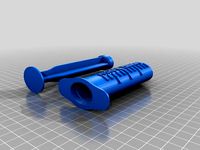
Technology: Savior and Destroyer by ryanmorrissey1997
...technology: savior and destroyer by ryanmorrissey1997
thingiverse
art300 technology as both savior and destroyer
thingiverse
free

SMART Technologies Logo by JbaileyHTHS
...smart technologies logo by jbaileyhths
thingiverse
this is my smart technologies logo (c)
thingiverse
free

YIF Technologies Logo by gopalsuresh74
...yif technologies logo by gopalsuresh74
thingiverse
yif technologies private limited logo
thingiverse
free

Meadowbrook Technology Logo by schmidjon
...meadowbrook technology logo by schmidjon
thingiverse
the meadowbrook school of weston technology logo, 3d!
Appropriate
thingiverse
free

microwave oven by Gallmix
...microwave oven by gallmix thingiverse appropriate dimensions...
thingiverse
free

RPG Army units by Dirsh
...rpg army units by dirsh thingiverse scale to the appropriate ...
thingiverse
free

Mouse Coaster by BlackConcept
...blackconcept thingiverse a coaster... be sure to scale it appropriatey ...
thingiverse
free

Rook
...rook thingiverse rook chess piece, should be scaled appropriatey. ...
thingiverse
free

Bonewood Ranger
...bonewood ranger thingiverse bonewood ranger appropriate for 18mm or 15mm...
thingiverse
free

Phone Stand by chandlersupple
...phone stand by chandlersupple thingiverse a phone stand with appropriate holes for a charging...
thingiverse
free

Forest Witch
...forest witch thingiverse forest witch miniature appropriate for 18mm or 15mm...
thingiverse
free
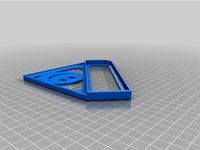
Behringer TD-3 Smiley Stand by Lizard_Wizard
...td-3 smiley stand by lizard_wizard thingiverse a smiley stand appropriate for this machine...
thingiverse
free
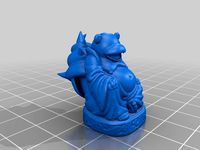
Slowbro Buddha by Fisk400
...thingiverse i think this is one of the more appropriate buddha remixes out...
Strength
thingiverse
free

strength test by AGcenturion47
...strength test by agcenturion47
thingiverse
thingiverse
free

Strength test by DoktorSylesej
...al design for a strength test, it is expected to break at around 40kg using abs.
the specimen should break at the middle section.
thingiverse
free

Strength Tester by jarred1997
... print. the concept of this rectangular shape is to test your plastic strength. simply print it and see how strong this piece is.
thingiverse
free

Strength Rune by ChezWaldo
...mark gives the angelic warrior a short but intense burst of increased physical strength.
taken straight from shadowhunters wiki
thingiverse
free

Strength/weakness key chain by CHIEF83620
...strength/weakness key chain by chief83620
thingiverse
key chain that is an ambigram of strength/weakness.
thingiverse
free

Project: Strength of Materials by insane66
...h break test and a compression strength break test. in this project we will do some material testing.https://youtu.be/4dgdbdbmbte
thingiverse
free

Strength Tester for Kids by WillemvD
... you hit, the faster the wheel starts rotating.https://youtu.be/um4qe2jxuyu
better print it with 50% infill for strength reasons.
thingiverse
free

Filament strength test "HOOK" by Gam017
...filament strength test "hook" by gam017
thingiverse
with this test you can check the strength of any filament.
thingiverse
free

Box Holder Wood Plank (More Strength)
...box holder wood plank (more strength)
thingiverse
(more strength)
thingiverse
free
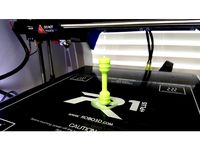
Filament Strength Test Specimens by flyingaz
...- horizontal
bending - horizontal
bending - vertical
fracture toughness
hardness
compressive strength
burning
thermal deformation
Source
thingiverse
free
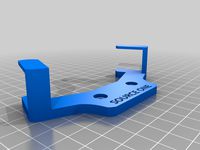
Source One - wall mount
...source one - wall mount
thingiverse
wall mount for tbs source one
thingiverse
free
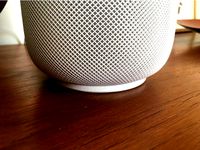
HomePod Source by MadeByNozzle
...ing some marks on wooden furniture due to the rubber that apple is using. this homepod source gets ride of this problem entirely.
thingiverse
free
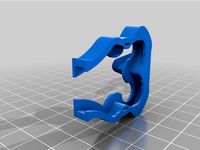
source one socks by Dutzisphere
...source one socks by dutzisphere
thingiverse
another take on tpu socks for source one
thingiverse
free

Radioactive source holder by poblockim
...radioactive source holder by poblockim
thingiverse
this is radioactive source holder for the a-level required practical.
thingiverse
free
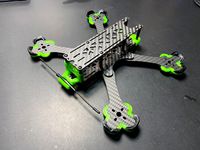
TBS Source One Protection Kit
...ource one arm bumpers/skids
source one soft motor mount pad
source one front bumper
source one rear unify/crossfire antenna mount
thingiverse
free

TBS Source One Accessories
...tbs source one accessories
thingiverse
a couple accessories for the tbs source one frame. should work with all versions.
thingiverse
free

source one camera mount by ninnux
...source one camera mount by ninnux
thingiverse
source one camera mount
is there 10,15,20,25 grades mount and freecad source
thingiverse
free

Arm bumper source one by jydotix
...arm bumper source one by jydotix
thingiverse
source one bumper
thingiverse
free

tbs source one toothgrinder by n2tat2ng
...tbs source one toothgrinder by n2tat2ng
thingiverse
toothgrinder source one skid
thingiverse
free

Source One Cap Holder by ikuiku
...source one cap holder by ikuiku
thingiverse
cap holder for the source one
Open
thingiverse
free

Opener
...opener
thingiverse
beer opener for dad
thingiverse
free

Bottle Opener & Can Opener
... be a good idiea.
like the original project this opener not have a big life opening bottles, but you can open hundreds of cans...
thingiverse
free

Package opener
...package opener
thingiverse
tool to open packages.
thingiverse
free

Opened half-open box by Kzivi
...opened half-open box by kzivi
thingiverse
openable container. i use it to keep garbage bags under the sink in the kitchen.
thingiverse
free

Open
...7 wheels and falken tires.
will fit open rc truggy
ref: https://www.thingiverse.com/thing:42198
wheel dia 98.4mm
tire dia 122.4mm
thingiverse
free

Beer opener aka Bottle opener by jega
...beer opener aka bottle opener by jega
thingiverse
this is remix of bottle opener
thingiverse
free

Decola Opener
...iverse
parametric decola paints opener. there are three different models, the third one (decola-opener-3.stl) is the most handy.
thingiverse
free

Softdrink Opener
...softdrink opener
thingiverse
can opener for hand function weakness with disiblity...
thingiverse
free

Bottle Opener
...bottle opener
thingiverse
the best freaking bottle opener you can print!https://youtu.be/nfh9eeinmzs
thingiverse
free

Jar Opener
...jar opener
thingiverse
jar opener- fasten to cupboard upper
~d mcg 19/03/2020
Test
thingiverse
free

TEST test
...test test
thingiverse
test
thingiverse
free
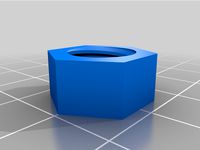
test test by discount
...test test by discount
thingiverse
test
thingiverse
free

test by test-it-free
...test by test-it-free
thingiverse
test
thingiverse
free

test
...test
thingiverse
test
thingiverse
free

Test
...test
thingiverse
test
thingiverse
free

Test
...test
thingiverse
test
thingiverse
free

Test
...test
thingiverse
test
thingiverse
free

test
...test
thingiverse
test
thingiverse
free

test
...test
thingiverse
test
thingiverse
free

test
...test
thingiverse
test
Printing
thingiverse
free
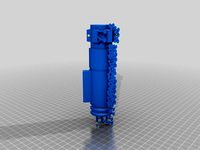
for print by Kieran20
...for print by kieran20 thingiverse for printing ...
thingiverse
free

Test Print - Calibration Print by fischer99
...nt settings. includes bridge, overhang, square walls and round walls.
i print with 20% infill, 3 shells, skirt only, no support.
thingiverse
free

Printing by munchanc
...printing by munchanc
thingiverse
things to print
thingiverse
free
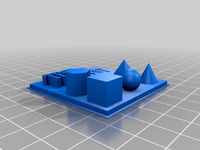
Test Print
...test print thingiverse much fun by printing ...
thingiverse
free

Print test
...print test
thingiverse
i use it to test print parameters for new materials
thingiverse
free

PRINTED by t_kondo
...printed by t_kondo thingiverse it's just a 3d printing typeface...
thingiverse
free

3D Printed ball (Print Your own) by 001002003004
...3004
thingiverse
print your own ball
steps
download the size you want to print
double click on the file
click print
thingiverse
free

3d Printing Support Test Print
...can learn more about using supports in cura on the drvax youtube channel and by watching this video:
https://youtu.be/qko_ayibp8k
thingiverse
free

Print on Fabric - small test print by OeG3D
...ingiverse
we tried to print on fabric as shown in https://www.thingiverse.com/thing:2787803
use the link above for instructions.
thingiverse
free

Print Scoop by Gibson1990
...print scoop by gibson1990
thingiverse
scoop for lifting 3d prints off the print bed
